By the Numbers
Carnegie Facts & Figures

Carnegie is where the next generation of big ideas are born. Our research breakthroughs have fundamentally changed how we understand biology, our planet, and the universe. We are one of few organizations worldwide where dedicated scientists can choose to explore new research directions that could redefine our collective future.
Andrew Carnegie founded this institution in 1902 as a home for world-transforming scientific discoveries. Today, Carnegie Science’s mission—to advance investigation, research, and discovery, and apply that knowledge to the improvement of humankind—is more urgent than ever.
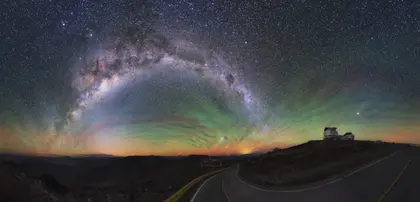
An independent research institution, we provide our scientists with the flexibility to follow their discoveries, seize opportunities, and define new fields of investigation. Our researchers continue to ask and answer compelling questions where we have the expertise, the leadership to mobilize the international research community, and the vision to transform our understanding.
Did You Know?
-
0
Teachers
Carnegie's Lara Wagner and colleagues led a hands-on geosciences professional development experience for middle and high school teachers in Arizona
-
0
Spawning events
Carnegie's Phil Cleves and his lab have managed to spawn soft coral a dozen times in a year and a half, a major advance in coral research.
-
0
Moons
Carnegie's Scott S. Sheppard has discovered dozens of planetary satellites over the course of his career.
A Legacy of Partnership
An inspiring philanthropist, Andrew Carnegie founded our Institution in 1902 as part of his dedication to giving away the majority of his wealth during his lifetime. To further this goal, he established the Carnegie Corporation of New York (CCNY) in 1911 to help disperse the remainder of his assets and to manage his legacy after his death. Today, CCNY’s work focuses on international peace, the advancement of education and knowledge, and the strength of our democracy—issues that Andrew Carnegie considered of paramount importance. He also strongly believed in unfettered scientific exploration for the betterment of humankind—in this way the longstanding partnership between our two organizations represents a shared commitment to improving the world around us.
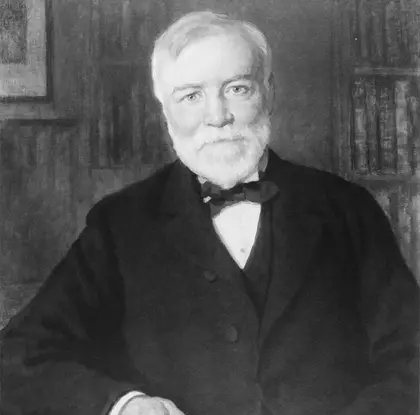
Carnegie Corporation’s Chief of Staff, Jeanne D’Onofrio, said, “Our mission is to advance your mission,” which is evident in the projects and people they have supported over the years. For example, Carnegie Corporation has funded close to a dozen postdoctoral fellowships at Carnegie Science. Andrew Carnegie had a strong passion to advance education for all and so, CCNY’s gifts to our Institution’s fellowships directly support his legacy. And, in turn, an important part of our mission is to promote education in the sciences and to help early career investigators achieve success.
Our Carnegie connection has deep roots. During his lifetime, Andrew Carnegie was a great humanitarian—giving generously of his own personal funds when natural or human disasters occurred. After a devastating earthquake in Chile in 1922 Andrew Carnegie gave $5,000—which would be close to $90,000 today—in humanitarian aid. Around the same time, CCNY also funded research at Carnegie Science that surveyed the origins and effects of the same earthquake—a multi-pronged approach to the disaster response.

In 2001 to mark the centennial of Andrew Carnegie’s commitment to philanthropy, former CCNY President, Vartan Gregorian, brought all the different Carnegie entities together in celebration and remembrance of our founder’s legacy. Though CCNY had been a longtime supporter of Carnegie Science and other Carnegie institutions, until this point, the various Carnegie-founded organizations were not directly connected with each other. The Carnegie Medal of Philanthropy was born out of this celebration and it continues to bring together Carnegie-established institutions to celebrate his legacy of philanthropy and recognize those who continue in his footsteps.
We are proud of our joint history and look forward to continuing to advance Andrew Carnegie’s aspirations for making the world a better place.
A Lasting Impact
-
0
Years
Carnegie Corporation of New York made their first grant to Carnegie Science in 1916.
-
0
Grants
The Carnegie Corporation of New York has funded more than 200 Carnegie Science projects and intiatives.
Supporting the Future
Michael Wilson has been an avid supporter of the arts and sciences for much of his life. A successful movie producer and screenwriter, he feels a sense of responsibility to give back to organizations that are having an impact on the lives of people in communities across the world. “I find it very satisfying to be able to help these institutions to achieve their goals and it is an honor to be part of their work,” said Mr. Wilson during a recent conversation.

Before starting his career as a movie producer, Wilson received an engineering degree from Harvey Mudd College and a juris doctor from Stanford Law School, where he then went on to work for the U.S. Department of Transportation in Washington, D.C. It was there that he met Carnegie Science’s board member John Crawford who introduced him to the Institution’s work.
“I always wanted to explore astronomy,” said Wilson, “For the past 100 years, Carnegie has been at the forefront of astronomical discovery—without Hubble and the research he did while at Carnegie, without Vera Rubin and her exploration into dark matter we would be living in a very different world.” Over his many years of involvement with Carnegie Science, he has become intimately aware of the many facets of our scientists' research having served on the Board of Trustees since 2010.
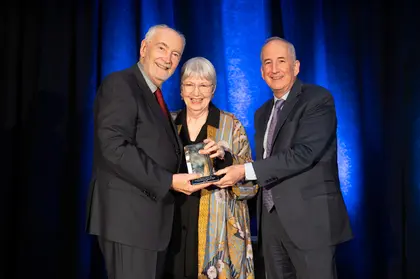
In 2019, he generously endowed three postdoctoral positions in honor of his three granddaughters. “I want my granddaughters to have role models that they can emulate and to have people who inspire them. I thought I would lead the way by starting a scholarship for women in astronomy. My granddaughters may be a little young now, but I hope, eventually, they will be inspired by what these women do,” said Wilson.
Wilson went on to say of Carnegie’s work, “Science is structured of small discoveries that are built upon one another and that is what Carnegie does so well. Carnegie has long been known as a launching pad for budding scientists because we give them the opportunity to work freely on the things they want to pursue—and that gives them the next leg up on their careers.”
We are very grateful for Wilson’s dedication to Carnegie Science through the giving of his time, expertise, and philanthropy.
Making a Difference
-
0
Years
Michael Wilson joined Carnegie Science's Board of Trustees in 2010.
-
0
Percent
In FY2022 every member of Carnegie Science's Board of Trustees donated the organization.
Staff Excellence
New Deputy Director

Aquatic ecologist Stephanie Hampton joined Carnegie as Deputy Director of Carnegie’s newly launched Division of Biosphere Sciences and Engineering. She arrived from the National Science Foundation, where she was the director of the Division of Environmental Biology. She was also a professor and the former director of an interdisciplinary environmental research center at Washington State University.
At Washington State, Hampton was part of a leadership team that oversaw the design, construction, and governance of a new research building to house the university’s Center for Environmental Research, Education, and Outreach, of which she was the director at the time. This background will be invaluable as Carnegie prepares to relocate its life and environmental science efforts to Pasadena where experts from a variety of fields will tear down disciplinary silos and tackle environmental, health, and energy system challenges at scales ranging from the molecular to the global.
Hampton’s own research focuses on the dynamic factors that shape aquatic ecosystems, with a focus on Lake Baikal in Siberia and the lakes of the Pacific Northwest. Her work has informed environmental conservation efforts and policymaking.
Prior to Washington State, Hampton served in several leadership roles at U.C. Santa Barbara, including deputy director of the National Center for Ecological Analysis & Synthesis, managing director of Science for Nature and People, and Interim Director of Community Engagement and Education for DataONE. She received her Ph.D. in ecology and evolution from Dartmouth College, a master’s degree in biology from University of Nevada Las Vegas, and a bachelor’s degree in biology from the University of Kansas Lawrence.
Honors & Awards

Carnegie’s Alan Boss was named one of 23 new Fellows of the American Astronomical Society. The honorees were chosen for their “extraordinary achievement and service” to the field. Boss, whose contributions to the fields of astronomy and astrophysics are numerous, was specifically recognized for “innovative theoretical investigations of the formation of stars and exoplanets” as well as “tireless leadership within the exoplanet exploration community in ensuring that NASA executes a credible and successful exoplanet program.”

The American Association for the Advancement of Science (AAAS) has elected Carnegie ecologist Joseph Berry to the newest class of AAAS Fellows, among the most distinct honors within the scientific community and part of a tradition that started in 1874. Since joining the Institution in 1972, Berry has developed powerful tools to understand the exchange of carbon dioxide and water between plants and the atmosphere—a cycle that has shaped the Earth and made it possible for life as we know it to thrive. His models and methods are widely used to contextualize photosynthetic activity at local, regional, and global scales, and have important implications for agriculture and land management.

Isotope geochemist Marilyn Fogel, who spent 33 years as a Staff Scientist at Carnegie’s Earth and Planets Laboratory (formerly the Geophysical Lab)—has been chosen to receive the Geochemical Society’s highest honor, the Victor Moritz Goldschmidt Award, in recognition for her numerous and varied contributions to the field. “Marilyn has had a deep and lasting impact on important questions in Earth and planetary sciences. Her work at Carnegie echoes through our halls and will continue to do so for decades to come,” said Carnegie President Eric D. Isaacs.

Isotope geochemist Marilyn Fogel was posthumously recognized with the American Geophysical Union’s Eunice Newton Foote Medal for Earth-Life Science, which is awarded annually to “an exceptional senior scientist for outstanding creative achievements in research at the intersection of Earth and life sciences.”
“The Foote Medal was created to highlight work being done that connects our understanding of the past, present and future of the Earth System, as well as the prospects for life on other worlds and the ‘future of human well-being,’” said Carnegie Earth and Planets Laboratory Director Michael Walter. “Marilyn’s research was impactful across every research area recognized by this prize.”

Earth and Planets Laboratory Director Michael Walter, an experimental petrologist who studies deep-Earth minerals and melts to elucidate the formation and evolution of our planet’s dynamic interior, was honored with the American Geophysical Union’s Norman L. Bowen Award at the organization’s annual Fall Meeting in December. The Bowen prize is the top recognition for a scientist in AGU’s Volcanology, Geochemistry, and Petrology section. It is presented each year to an individual who has made “outstanding contributions” to the field, either in the form of a single, groundbreaking paper, or a cumulative set of advancements over time.

Carnegie algal physiologist Adrien Burlacot was selected for the 2023 class of Forbes’ 30 Under 30 North America list in science. Honorees were chosen for their “unconventional thinking,” Forbes said in its announcement of the new class, describing them as individuals “who have rewritten rules, reshaped industries, and are breaking ground towards a brighter future.” The recognition spotlights Burlacot’s efforts to fight world hunger and mitigate climate change by hacking the process plants use to convert the Sun’s energy into chemical energy in the form of sugars and fats.
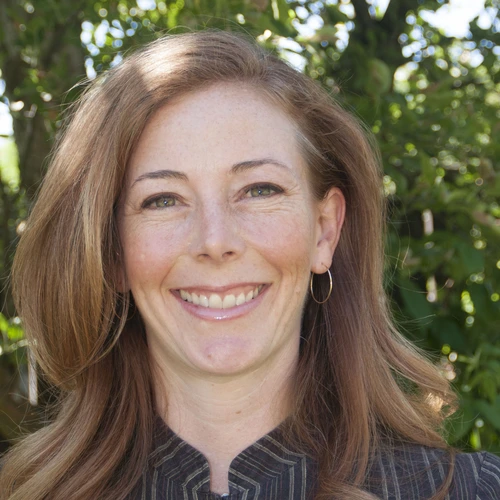
Deputy Director of Carnegie’s Biosphere Sciences and Engineering Division Stephanie Hampton, a freshwater ecologist whose work has informed both conservation efforts and policymaking, has been elected President of the Ecological Society of America (ESA), the world’s largest ecological professional society. She will serve a three-year term. A longtime member of ESA, Hampton’s service to the organization includes chairing the Aquatic Ecology section between 2011 and 2013, as well as membership on the Science Committee between 2013 and 2015, and Sustainability Science Committee between 2014 and 2015.

Carnegie postdoctoral researcher Edgar Virgüez was named one of four new trustees of Duke University. He will serve a three-year term. Virgüez joined the Carnegie Institution for Science’s Department of Global Ecology in February after completing his Ph.D. at Duke. He works with Carnegie’s Ken Caldeira on modeling climate and energy solutions.
“As a rising scholar and emerging higher education leader, my experiences at Carnegie this year—and the guidance offered by Ken—have expanded my scientific vision and shown me how to contribute to comprehensively addressing the most-pressing societal issues facing humanity today,” Virgüez added. “I will bring this knowledge to my work as a Duke trustee.”
Inaugural Carnegie DEI Mini-Grants Awarded
In an effort to advance diversity, equity, and inclusion work throughout the organization and our surrounding communities, Carnegie has awarded 10 projects with inaugural DEI mini-grants. The mini-grant program provides up to $5,000 to support DEI-related projects, ideas, or collaborations.

“The mini-grant program launched last fall and was designed to enable Carnegie faculty, postdocs, and staff to obtain funding for small-scale projects that help advance our local and institutional DEI goals,” said Associate Science Deputy Anat Shahar, who with Science Deputy and Observatories Director John Mulchaey oversees Carnegie’s DEI efforts.
Many of the grants focus on improving access to STEM programs and activities. Both Adrien Burlacot from the Department of Plant Biology and the Department of Global Ecology's Wu Sun received grants to support joint internships between the two Palo Alto-based departments and the Carnegie Academy for Science Education in Washington, D.C.. At the Observatories, Allison Matthews will use a grant to reach under-served Pasadena elementary school students with personalized, hands-on astronomy activity kits and at the Earth and Planets Laboratory (EPL) Johanna Teske will use a grant for computing support for undergraduate interns.
Several grants focus on the intersection of art and science. Plant Biology’s Selena Rice will expand the Plant Cell Atlas initiative's existing art exhibition partnership with HBCUs to showcase the work of historic Black plant researchers. Another Plant Biology program, run by Elena Lazarus, will advance an existing program to organize screenings of and panel discussions about science-related films. At the Observatories, Ethan Nadler will partner with Los Angeles-based arts education organization Create Now to make dark matter visualizations.
EPL’s Suzy Vitale and the Observatories Jeff Rich will both their grants for community outreach. Vitale will organize a Science in Your Backyard event for Washington, D.C., area science lovers and Rich will expand an existing program to bring local Pasadena students to the historic Mount Wilson Observatory.
The Observatories’ Gwen Rudie’s grant is also focused on strengthening community relationships, but with an inward gaze. Her project will facilitate lunchtime conversations and trust-building between different cohorts of employees on campus.
“This is a great batch of recipients, and we look forward to hearing their reflections as their projects progress,” Shahar concluded.
In Memorium

At the age of 69, Marilyn Louise Fogel, an isotope geochemist whose work touched on a broad scope of subjects ranging from astrobiology to paleoecology and climate change to human health, died May 13, 2022, after a prolonged battle with Amyotrophic Lateral Sclerosis (ALS).
Fogel spent 33 years as a Staff Scientist at Carnegie’s research campus in Washington D.C., at what is now the Institution’s Earth and Planets Laboratory, as well as a short stint as a visiting scholar at Carnegie’s Department of Plant Biology in California. She developed the use of stable isotopes to trace astrobiological, biogeochemical, and ecological processes, including the impact of climate variation on ancient ecosystems, species migration, diet, and organics found within meteoritic samples.
Her awards and accomplishments were many. They include Chair of the Life and Environmental Sciences Unit of the U.C. Merced School of Natural Sciences (2012); first woman selected for the Geochemical Society’s Alfred Treibs Medal (2013); Director of the EDGE (Environmental Dynamics & Geo-Ecology) Institute at U.C. Riverside (2016); received the Geochemical Society’s highest honor, the Victor Moritz Goldschmidt Award (2022). Additionally, she was a member of the National Academy of Sciences and a fellow of the American Association for the Advancement of Science and the American Geophysical Union.

Former Trustee William Gayden died August 17, 2022. He was 81. Gayden joined Carnegie’s Board in 2002 and served on several key committees during his tenure.
Gayden was the founder, chairman, and chief executive officer of Merit Energy Company, a private firm specializing in direct investments in oil and gas assets. Prior to founding Merit Energy in 1989, Mr. Gayden was president of Petrus Oil Company and held many senior positions at Electronic Data Systems. Gayden began his career as a salesman with IBM.
During his time as a Carnegie trustee, Gayden’s generous support advanced multiple efforts, including the Giant Magellan Telescope, capital funds for several Carnegie buildings, and outreach efforts at the Observatories.

Michael Gellert, co-founder of investment vehicle Windcrest Partners who oversaw a decade of major institutional initiatives as the Chairman of Carnegie’s Board of Trustees, died August 17, 2021. He was 90.
Gellert joined the Board of Trustees in 1995 and was elected Chair in 2003. He served until 2018 after which he became an emeritus member.
He had a strong commitment to the life and environmental sciences which positioned Carnegie researchers to affect the national and international discourse around the greatest challenge facing humanity today—climate change and its impacts on Earth’s dynamic cycles and fragile ecosystems. Gellert also played a leading role in Carnegie’s founding commitment to the Giant Magellan Telescope, which is under construction at our Las Campanas Observatory in Chile. “Mike’s leadership was foundational to the creation of the GMT,” said President Emeritus Richard Meserve, whose tenure coincided with Gellert’s.
In 2000 he was recognized by the American Academy of Arts and Sciences, which elected him a Fellow. In 2015, he was awarded the Harvard Medal for his work on the Harvard Club of New York’s Board of Managers and other alumni affairs.
He is one of the largest donors in the Institution’s history, supporting many projects and initiatives that span the breadth of our research. “His role at Carnegie was never about himself,” concluded Suzanne Nora Johnson and Stephen Fodor, who succeeded Gellert as Co-Chairs of the Board. “It was always about advancing the good of the Institution and quality of the science inside the Institution.”

Trustee Emeritus and 2003 Carnegie Medal of Philanthropy laureate Kazuo Inamori died August 24, 2022, after an illustrious business career in his home nation of Japan. He was 90.
As the founder of industrial ceramics giant Kyocera and telecommunications company KDDI, Inamori was one of a small handful of industrialists who helped build post-war Japan into an economic success story.
Inamori joined Carnegie’s Board of Trustees in 1990 and served for 12 years before stepping down. He remained an emeritus trustee until his death.
“I was very impressed by the noble aim of your Institution, the advanced scientific works performed at your laboratories, and the personality and dedication of your board members and staff. I am honored you have asked me to join your distinguished Board of Trustees as a member,” Inamori wrote in his letter of acceptance. “I was especially touched by your intent in making your institution a global organization dedicated to benefit all mankind, and that you have selected me to be the first Japanese trustee on the board.”
In 1996, Inamori gave Carnegie $3.1 million to complete the first three Magellan Telescope instruments, which were installed four years later. In appreciation of his support, the Inamori Magellan Areal Camera and Spectrograph and The Magellan Inamori Kyocera Echelle Spectrograph were named in his honor.
Beyond Carnegie, Inamori’s philanthropic efforts created the prestigious Kyoto Prize. Supported by the Inamori Foundation, the award recognizes individuals and groups worldwide who have made outstanding contributions to the progress of science, technology, the advancement of civilization, and enrichment and elevation of the human spirit.
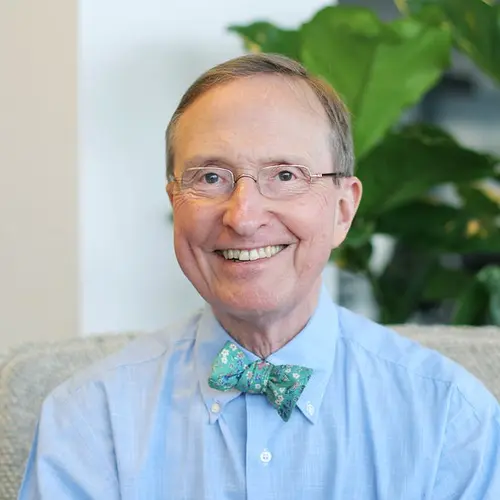
The founding chair of the Carnegie Scientific Advisory Council (CSAC), Thomas Lovejoy, a renowned ecologist and conservationist who is credited with coining the term “biological diversity," or "biodiversity,” died December 25, 2021. He was 80.
In 1978, Lovejoy conceived of the world’s largest and longest-running study of habitat fragmentation—the Biological Dynamics of Forest Fragments project—which has trained generations of conservation biologists and advocates and resulted in hundreds of scientific publications. Two years later, he published the first estimate of global extinction rates.
His many prestigious advisory roles included work for the Reagan, George H.W. Bush, and Clinton administrations and past chairmanship of the Scientific and Technical Panel for the Global Environment Facility. He also previously served as Senior Advisor to the President of the United Nations Foundation and Chief Biodiversity Advisor and Lead Specialist for the Environment for the Latin American region to the World Bank. He was also was the founder and past president of the Amazon Biodiversity Center and since 2010 he had been a professor of environmental science and policy at George Mason University.
Among many other notable achievements, he won the Tyler Prize for Environmental Achievement in 2001, the BBVA Foundation Frontiers of Knowledge Award in Ecology and Conservation in 2008, and the Blue Planet Prize in 2012
Biosphere Sciences & Engineering
Division Leadership, Staff Scientists & Staff Associates
Research Staff Member
Staff Associate
Research Staff Member
Research Staff Member
Staff Associate
Research Staff Member
Staff Associate
Research Staff Member
Director, Department of Global Ecology, Biosphere Sciences & Engineering
Staff Associate
Staff Associate
Research Staff Member
Research Staff Member
Research Staff Member
Research Staff Member
Research Staff Member
Biosphere Sciences & Engineering Deputy Director
Research Staff Member
Biosphere Sciences & Engineering Director
Research Staff Member
Acting Director, Department of Plant Biology, Biosphere Sciences & Engineering
Directory, Department of Embryology, Biosphere Sciences & Engineering
Earth & Planets Laboratory
Division Leadership & Staff Scientists
Research Staff Member
Research Staff Member
Research Staff Member
Research Staff Member
Research Staff Member
Research Staff Member
Research Staff Member
Research Staff Member
Research Staff Member, Carnegie Science Deputy for Research Advancement
Research Staff Member
Research Staff Member
Research Staff Member
Research Staff Member
Research Staff Member
Research Staff Member
Research Staff Member
Research Staff Member
Research Staff Member
Research Staff Member
Research Staff Member
Research Staff Member
Research Staff Member
Research Staff Member
Research Staff Member
Research Staff Member
Research Staff Member
Director
Observatories
Division Leadership, Staff Scientists & Staff Associates
Research Staff Member
Research Staff Member
Director, Las Campanas Observatory
Founding Director, Carnegie Theoretical Astrophysics Center
Research Staff Member
Research Staff Member
Research Staff Member
Research Staff Member
Research Staff Member
Associate Director for Strategic Initiatives
Research Staff Member, Giant Magellan Telescope Chief Scientist
Associate Director for Technological Affairs
Staff Associate
Research Staff Member
Director, Carnegie Science Deputy for Science
Associate Director, Las Campanas Observatory
Research Staff Member
Research Staff Member
Research Staff Member
Advancing Science
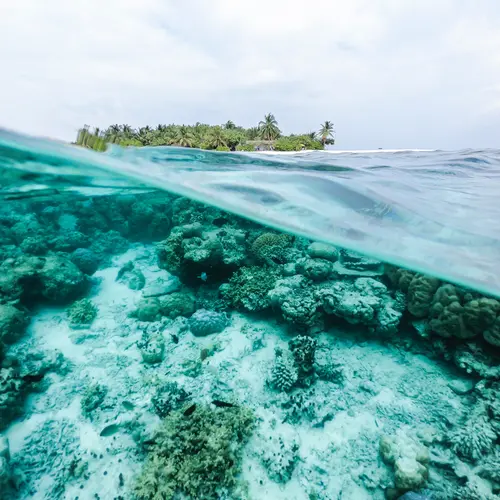

Developing a New Tool to Evaluate and Track Global Sustainability Targets
Climate change and habitat destruction may have already caused the loss of more than one-tenth of the world’s terrestrial genetic diversity, according to research led by Carnegie evolutionary geneticist Moises Exposito-Alonso.
Human activity has impacted or shrunk half of Earth’s ecosystems, affecting millions of species. The partial loss of geographic range diminishes population sizes and can prevent populations of the same species from interacting with each other. This has serious implications for an animal or plant’s genetic richness and ability to meet the coming challenges of climate change.
Mutations represent small, random natural variations in the genetic code that could positively or negatively affect an individual organism’s ability to survive and reproduce, passing the positive traits down to future generations. As a result, the greater the pool of mutations upon which a species is able to draw, the greater the chances of stumbling upon that lucky blend that will help a species thrive despite the pressures created by habitat loss, as well as shifting temperature and precipitation patterns.
(Caption: Illustration of genetic diversity loss courtesy of Mark Belan | artscistudios.com)

Exposito-Alonso and his collaborators set out to develop a population genetics-based framework for evaluating the richness of mutations available to a species within a given area. They analyzed genomic data for more than 10,000 individual organisms across 20 different species to demonstrate that Earth’s terrestrial plant and animal life could already be at much greater risk from genetic diversity loss than previously thought.
Protection of genetic diversity was a major topic of discussion at the 2022 United Nations Biodiversity Conference, COP15, at which Exposito-Alonso represented Carnegie. One of the meeting’s sessions, organized by the Group on Earth Observations’ Biodiversity Observation Network, G-BIKE, and the Coalition for Conservation Genetics discussed genetic diversity targets and projections, including Exposito-Alonso’s work.
(Caption: Photograph courtesy of Benjamin Wong Blonder)

Improving Agricultural Resilience in a Changing Climate
Sustainable Irrigation Could Feed 1.2 Billion More People
As climate change shifts precipitation patterns, irrigation can be a powerful tool for increasing the world’s food supply without converting natural spaces into farmland, according to Carnegie’s Lorenzo Rosa, whose work aims to decarbonize the agricultural industry.
Population trends indicate that agricultural production will need to double by 2050. But climate change is expected to both shift precipitation patterns and increase heat stress on plants, meaning that relying on rainfall alone will not keep up with the increased demand for food.
Studies show that irrigated crops are twice as productive as those that rely on rain. However, irrigation already accounts for between 85 and 90 percent of human water consumption. Rosa set out to determine whether sustainable irrigation strategies could be expanded to maximize agricultural productivity and minimize the negative environmental impacts of water use. Sustainable irrigation relies on groundwater and locally available water sources, without harming freshwater ecosystems or depleting them beyond what precipitation can replace.
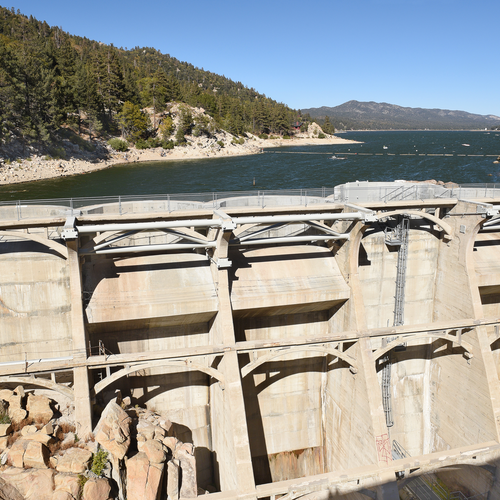
Rosa revealed that under current conditions, there is enough water available from local, renewable sources to expand sustainable irrigation over 35 percent of farmland around the world. However, climate change will make this calculus more complex. As the world warms, Rosa indicated that in addition to heat stress and changes in rainfall, climate change could also make water evaporate faster, decreasing the efficiency of irrigation.
That said, Rosa found that constructing long-term water storage reservoirs could enable sustainable irrigation to feed 1.2 billion more people than relying on renewable water resources alone.
In the past, big dams were the most common method for saving rainwater for agricultural irrigation. However, these projects inflicted harm on their local and regional ecosystems, and particularly on fish and migratory birds. Dams also lose water due to evaporation and necessitate transportation to get the stored water to farmers’ fields. In collaboration with Stanford University researchers, Rosa showed that these drawbacks mean that big dams should be considered a measure of last resort.

Is Net-zero Food Production Possible?
Rosa studies challenges and opportunities related to food, water, and energy security from a variety of angles. Together with Carnegie Visiting Investigator Paolo Gabrielli of ETH Zurich, he also analyzed strategies for decreasing greenhouse gasses emitted by the synthesis of nitrogen fertilizers. Their research, which found that there’s no one-size-fits-all solution for decarbonizing fertilizer production, was funded by the ClimateWorks Foundation.
Right now, nitrogen fertilizer manufacturing is responsible for 2 percent of global energy consumption and emits about 310 megatons of carbon dioxide pollution each year. Rosa and Gabrielli analyzed a variety of options for lowering the carbon footprint of the fertilizer industry to net-zero emissions without diminishing the global food supply, including:
- Capturing the carbon produced from nitrogen fertilizer synthesis before it reaches the atmosphere and permanently storing it underground.
- Using biomass to capture and contain the carbon produced by nitrogen fertilizer production.
- Supplying the hydrogen molecules to create nitrogen fertilizer using a process based on carbon-free electricity.

Rosa and Gabrielli found that while these solutions can reduce agriculture’s dependence on fossil fuels, they will require more land, water, and energy than current methods of nitrogen fertilizer production. This means that approaches will need to be tailored on a case-by-case basis depending on local resources. The situation could also potentially be improved by restructuring the international chemicals trade to move fertilizer production from countries with large fossil resources to countries with abundant renewable energy infrastructure, land, and water resources.
“Rosa and Gabrielli’s work on reducing emissions from the fertilizer industry provides insight that is key to improving our global food system. We are pleased to have partnered with Carnegie on this important research to gain a better understanding of fertilizer’s role at the intersection of food, energy, land, and climate.” –Avery Cohn, Program Director, Food & Agriculture, ClimateWorks Foundation

Early JWST Breakthrough Revealed Atmospheric Carbon Dioxide on Exoplanet
The James Webb Space Telescope captured the first clear, detailed, indisputable evidence for atmospheric carbon dioxide ever detected on a planet outside the Solar System. The discovery was announced in September 2022 by the mission’s Transiting Exoplanet Community Early Release Science Team, which included four Carnegie astronomers—post doctoral students Munazza Alam and Anjali Piette and Staff Scientists Peter Gao and Johanna Teske.
As part of the Early Release Science (ERS) Team’s efforts, JWST observed a gas giant planet, called WASP-39 b, which orbits a Sun-like star 700 light-years from Earth. Their finding offered thrilling evidence of JWST’s capabilities and provided important insights into the link between planetary formation and composition.
First discovered in 2011, WASP-39 b is a hot gas giant with about the same mass as Saturn and a diameter 1.3 times greater than Jupiter. Its extreme “puffiness” is related in part to its high temperature of about 1,600 degrees Fahrenheit, or 900 degrees Celsius. Unlike the cooler, more compact, gas giants in our Solar System, WASP-39 b orbits very close to its star at a distance only about one-eighth that between the Sun and Mercury, completing its orbit in just over four Earth days.
(Caption: Artist's conception courtesy of NASA, ESA, CSA, Joseph Olmsted/STScI)

WASP-39 b was initially discovered using ground-based detections of the subtle, periodic dimming of light from its host star as the planet passed in front of it. So-called transiting planets like this present astronomers with ideal opportunities to probe their atmospheres.
During a transit, some of the starlight is filtered through the planet’s atmosphere. Depending on the atmosphere’s composition, thickness, and cloudiness, it absorbs some colors of light more than others—making the planet appear larger. Researchers can analyze these miniscule differences in the size of the planet to reveal the atmosphere’s chemical makeup.
The ERS program, which represents 22 different research institutions, was designed to provide the research community with robust data from JWST as quickly as possible. This is one of several JWST teams involving Carnegie astronomers, including six projects headed up by Carnegie scientists—Gao and Teske are both leads on separate JWST investigations of exoplanet atmospheres—and several others on which Carnegie staff and postdocs are team members.
(Caption: JWST illustration courtesy of NASA GSFC-CIL-Adriana Manrique Gutierrez)

Transformative Anonymous Gift Will Drive New Era of Astronomical Discovery
An anonymous bequest of $34.8 million will keep the Carnegie Observatories at the frontier of astronomy and astrophysics. This represents the largest single gift to the Institution since it was established by Andrew Carnegie in 1902.
Since George Ellery Hale and Andrew Carnegie first established the Mount Wilson Observatory, Carnegie scientists have transformed the ways in which we understand our universe. This philanthropy provides a foundation for the next era of breakthrough discoveries from Carnegie astronomers.
The gift will enable the first expansion of staff scientist positions at the Observatories since the days of Edwin Hubble. These new roles will be created for individuals who specialize in using or developing instruments for the telescopes at Carnegie’s Las Campanas Observatory in Chile.

The funds will also support the design and construction of new instruments that will enhance the abilities of Carnegie’s twin Magellan telescopes, as well as the Giant Magellan Telescope when it comes online. The Carnegie Observatories is a rare institution with an on-site machine shop, enabling observational astronomers, theorists, engineers, and machinists to work in close collaboration, developing the tools that will open new doors to discovery.
This bequest will empower generations of Carnegie scientists to reveal the cosmos in never-before-seen detail. It is an excellent example of the tremendous power of philanthropic giving—a single individual’s investment in astronomy will be felt for decades to come, both at Carnegie and throughout the scientific enterprise.
Outreach & Education
Get the latest
Subscribe to our newsletters.







